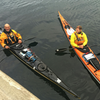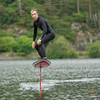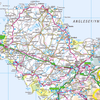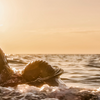5 Things To Consider When Starting Open Water Swimming
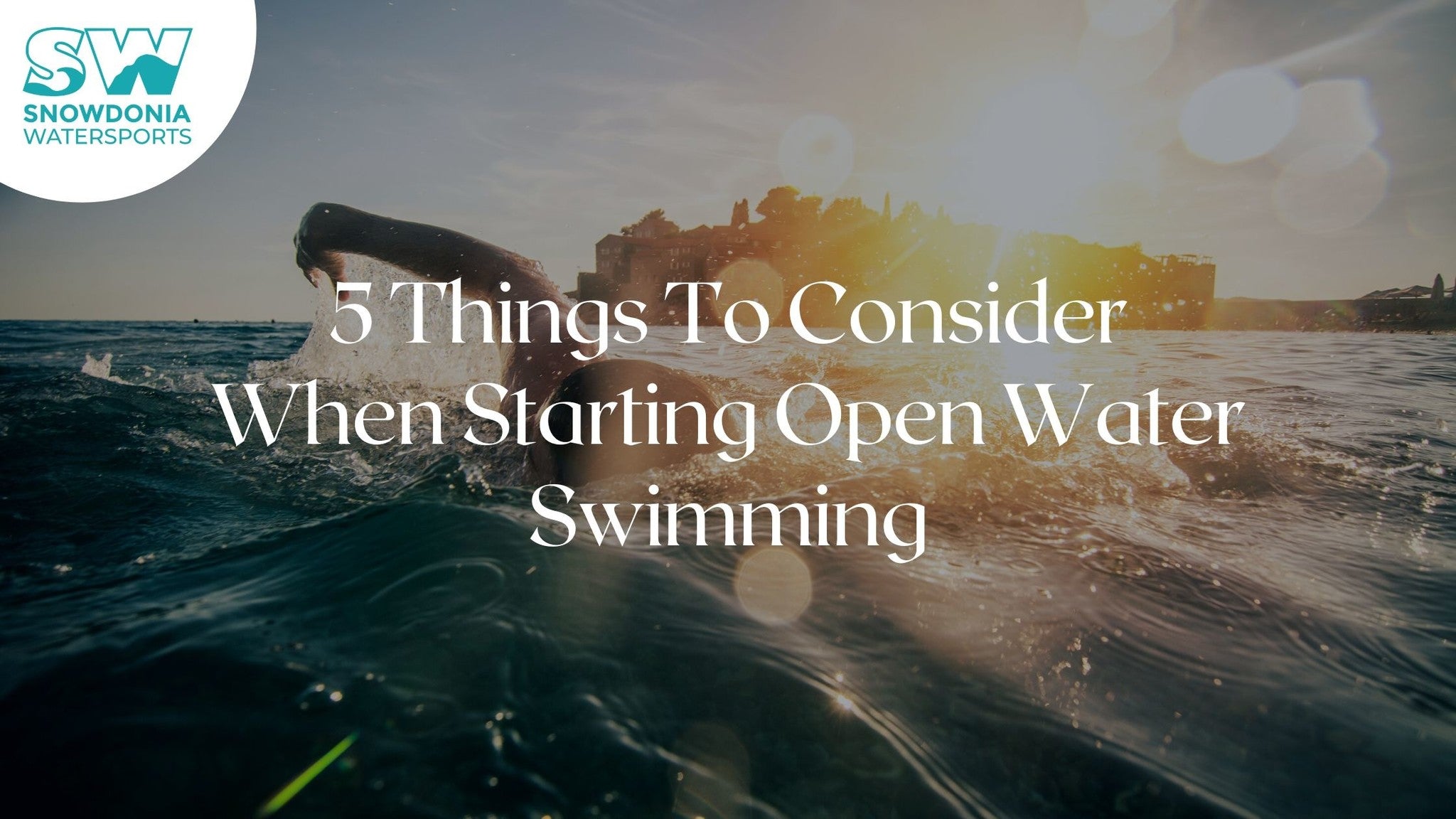
A short article aimed at anyone who's interested in starting open-water swimming.
What is “Wild” or “Open Water Swimming”?
If you are reading this mini article, then it's fair to assume you are looking at getting into Open Water Swimming. As an activity, wild swimming has been going on for a long time - people have always enjoyed a dip, both in summer and winter. If there is water, there will be someone wanting to swim in it, more recently there has been research that suggests the benefits of floating around in cold water can positively affect your mental and physical health. So, hopefully, with the help of this short list, you will have all the information you need to get started.
1. Location
Wild swimming relies on one key thing - water. We don't have any shortage of this in the UK, and Ireland. Being an Island nation we have the choice of both freshwater and saltwater swimming venues. Both types of locations can bring their own challenges.
Freshwater - These locations can be very slow-moving rivers, quiet mountain lakes, loughs, large ponds and disused quarries. Fresh water tends to get a lot colder in the winter months and the temperatures can drop all the way down to almost freezing. At Llyn Padarn (where we are located) the temps can and have dropped down to 2.5 degrees C. Access is an important thing to consider when using inland venues. Always check that you are allowed to be there.
Saltwater - The Sea is often people's first cold water dipping experience and for good reason. It is readily accessible but unlike the inland venues, there are a few more factors to consider when heading to the beach.
Tides - We have a big tidal range in the UK and this creates current in certain places. In some cases, this current can be too strong to swim against. Rip currents, Longshore drift, Tide races and overfalls are a few phrases we recommend you familiarise yourself with.
Wind direction - A light onshore wind is preferable when swimming, as the chance of getting blown offshore is lower.
Jellyfish - During the summer months, we get a variety of jellyfish species. Some won't sting, but a few most definitely will. Lions Maine and compass jellyfish are the most common stinging culprits. In recent years we have seen more Portuguese Man Of War appear in Cornwall, Pembrokeshire and North Wales. The PMOW can give a nasty sting. Regardless, all species are beautiful to look at, just keep your distance.
Weaver Fish - These are small fish that populate the sandy shallow water of our UK and Irish beaches. They have stinging spines on their back and if stepped on can be painful. If worried about these, a thick-soled wetsuit boot will help protect your feet.

2. Weather
Unsurprisingly, weather can have a big effect on our wild swimming experience. Ideally, days with light wind, good visibility and sunshine are what we open water swimmers dream of. Unfortunately, we can count such days on one hand, especially in the winter months. So does this mean that when the weather is bad we never swim? Well no of course not, it's all about understanding the locations and their limitations. We can then manage our expectations or change the plan.
Here are a few examples below:
High amounts of rain over a few hours can have a big effect on how fast a river is flowing. Potentially turning a safe venue into a more dangerous one. Having another venue that isn't affected by rainfall would be good to have as a plan B.
The sea will hold some amount of chop for a few days after larger storms, so the area you use could be a bit lumpier than you're used to. Especially if you have only swam there in the summer. Harbours will always be more sheltered, so great on days like this.
Lake venues can be great in all weather as there will be shelter somewhere around the edge. Especially if there are trees to help break up that wind.
Large amounts of rain can flush drains into our sea, the same can happen with sewers. So if you get to your usual spot and the water is a different colour, then maybe choose a different venue.
3. Wetsuit or No wetsuit?
Wetsuits are by no means mandatory for wild swimming but can help make your sessions more comfortable, prolonging the time you will be able to stay in the water. The job of a wetsuit is to trap a layer of water between the suit and your skin, heating that layer of water and subsequently, keeping you warm. Your wetsuit choice will depend a lot on the kind of swimming you do and the temperature of the water you will be in. Below is a list of the common swimming types we see and the recommended wetsuit style for that group.
The Breaststroke Chatty Cathy - If the plan is to go for a social float with your friends, talk about life's challenges and have a good old chinwag then this is the group for you. This group generally tends not to wear wetsuits, but when they do then the wetsuit needs to match the swimming. A thinner wetsuit is more suitable for breaststroke, as too much buoyancy in the legs can lead to some lower back discomfort. We stock the Orca Wetsuits TRN, which is neutral buoyancy and perfect for swimming socialites.
Front Crawl Paul - Ok so if you have drunkenly signed up for a triathlon with your friends, have done some swimming in the pool and want to move it outside or feel like challenging your fitness/cold water tolerance, this is for you. We recommend a slightly thicker wetsuit for this group as they tend to swim mainly front crawl and being buoyant isn't too much of an issue. The Orca Athlex Float is 4.5mm thick on the legs, helping you stay horizontal in the water. That extra thickness will help to prolong your water time in the winter. The arms and shoulders of this style of swimsuit are thinner to be as flexible as possible.
The Seasoned Vet - Ok so you're a decent swimmer, happy with your technique and just want a wetsuit that is flexible and warm but without too much buoyancy. This is a difficult category to prescribe a wetsuit for, as thick a neoprene will be warm but too buoyant. To combat this, companies make the area around the hips thick, to provide float and buoyancy but then make the neoprene a lot thinner on the torso and lower legs. Providing a warm wetsuit with just the right amount of float. We stock the Orca Athlex Flow, which is more flexible than the Athlex float and less buoyant but boasts a 5mm thick panel around the hips.
The wetsuit style you choose is completely up to you and your swimming style will determine which is best. If you have any questions on wetsuit styles then feel free to contact our shop.
4. Swimming Accessories
Goggles - Open-water swimming goggles tend to be a bit beefier than pool goggles. This means they are easier to handle with cold hands and are more likely to stay on your face in choppy conditions. A particular favourite of ours is the Orca Goggle Mask.
Swim Hat - A lot of people will use a latex swim cap, which works well in warmer conditions and tends to be bright colours. If it's colder, a neoprene swim cap will help to keep your head toasty. People will tend to wear a silicone cap on top of this as it helps make you more visible
Gloves and Socks - As it gets colder, keeping the fingers and feet warm will help to make your session more comfortable, so you can keep open water swimming and paddleboarding in winter. The fit with these is important, too tight and they will restrict blood flow, too loose and they will come off while swimming.
Neoprene vest - One of the limitations of swimming wetsuits is that they do tend to be quite thin on the torso. Buying a neoprene vest to go under your wetsuit can help to boost your time in the water, not to mention keep you more comfortable. We recommend the Heatseeker Thermal Top from Orca.
Swim Float - A Swim Float does exactly that, it floats behind you as you swim and is attached to your waist. Having a float in the water can make you more visible to other water users and will allow you to have a rest or adjust your goggles. We sell the Swim Secure Classic which is simple and cost-effective.
5. Safety
When deciding to take the plunge and kickstart your open water swimming career, we must always consider how safe we are. There will always be risks involved when putting ourselves into cold potentially deep water, but it's more about recognising the risks and managing them than avoiding the activity altogether. Considering everything above, the location you are going to, having the appropriate equipment, the time of year and your ability level will help to make your swimming experience a positive one.
The main thing is to always let someone know what the plan is, especially if you are planning on swimming alone. Below is a little safety checklist that you can consider the next time you head out for a dip, giving this information to a friend or loved one can be paramount if something was to go wrong.
Who - Who's going, the number of people in the group and their names.
What - What are they or you wearing? Red swim cap, yellow swim float, red and black wetsuit.
Where - Which location are you going to swim in and what is the plan? “We are going to swim in Llyn Padarn, Starting from the main pontoon area and swimming across and back”
When - What time are you starting and when will you be off the water? When should the person with this information call emergency services? “If I haven't called or texted to say I'm off the water by 1800 then call the emergency services”
This may seem a little over the top, but this kind of information would be invaluable to the emergency services if something was to go wrong and they came looking. Creating a list like this can stack the odds in your favour.
So, What Now?
Well done for making it this far, you must be interested. So what are the next steps for a budding open water swimmer? Well, the first step is to get a crew together, everything is easier with others. Maybe join a swimming group on Facebook, every coastal town will have a few little groups of diehard dippers. These groups tend to have fun names like “The Blue Tits” or “Menopausal Mermaids”. If you aspire to swim triathlon then join a dedicated Triathlon club, they will have open water sessions at least once per week. Get out there, have a bit of fun and get swimming.
If you have any other questions about open water swimming then send us an email at shop@snowdoniawatersports.com or check out our online store.
-
Posted in
breaststroke, cold water, front crawl, openwater, swimming, wild
